Many moons ago I ran a men’s yoga class early on a Sunday morning and at then end of the hour I would ask everyone to get into svasana – a quietening and restorative pose at the end of your yoga practice. The men’s class would, as really does every class, move with alacrity to get in to the pose of svasana – which they immediately re-named “sleepy time”. Whilst this pose promotes a host of well-being benefits, a number of yoga poses do promote “sleepy time”.
The asana work which we largely do in our yoga practice in the West is the physical representation of yoga – one of the eight limbs of yoga. The purpose of the physical work is to learn about your body, and start to train it and bring it under control. We use both our bodies and our mind during a yoga practice. So little by little, whilst focusing on the physical, we start to train the mind to concentrate inwardly on the body, work which leads us to the fourth limb of yoga – pranayama. At the start of class, we talk about quietening the mind, leaving other external thoughts behind and coming into the yoga space. We gather our awareness to our mat and then to our body and finally to our breath – all steps in bringing the focus inward. And then we concentrate on the poses – there is little room for extraneous thoughts. How often in class, when your teacher says it’s time for svasana, do you look at your watch and wonder where the time has gone. The body AND the mind have been occupied.
As we become more proficient in our yoga practice, we can become aware of certain poses which further enhance this quietening and emptying effect on the brain. And it is these poses, which I will detail below, which can be harnessed when sleep becomes elusive. A common concern for many of us at different times in our lives due to many and various factors. So when you are chasing some “sleepy time”, why not try :-
SUPTA BADDHA KONASANA
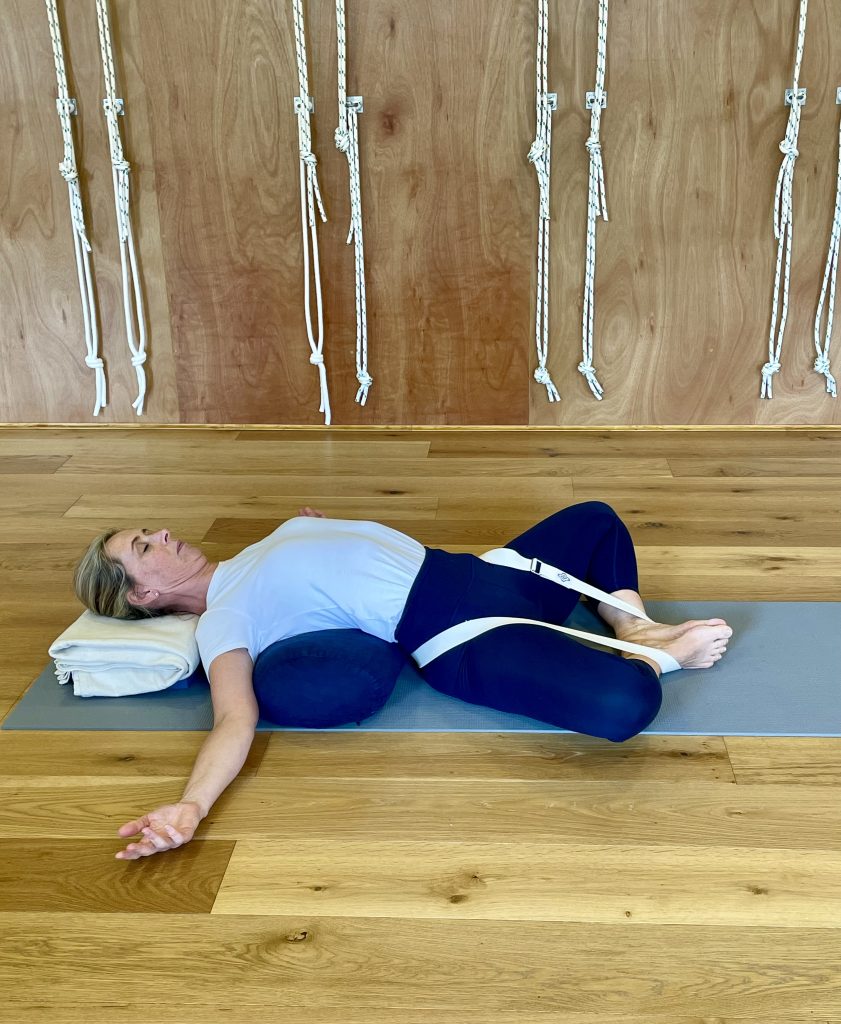
SETU BANDHA SARVANGASANA
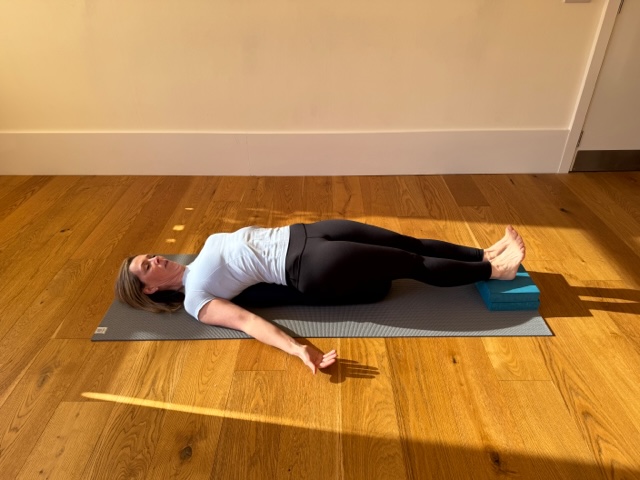
JANU SIRSASANA (HEAD SUPPORTED)
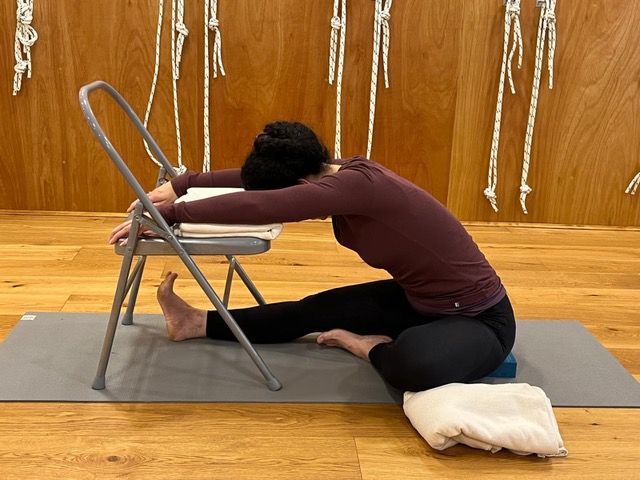
PASCHIMOTTANASANA (HEAD SUPPORTED)
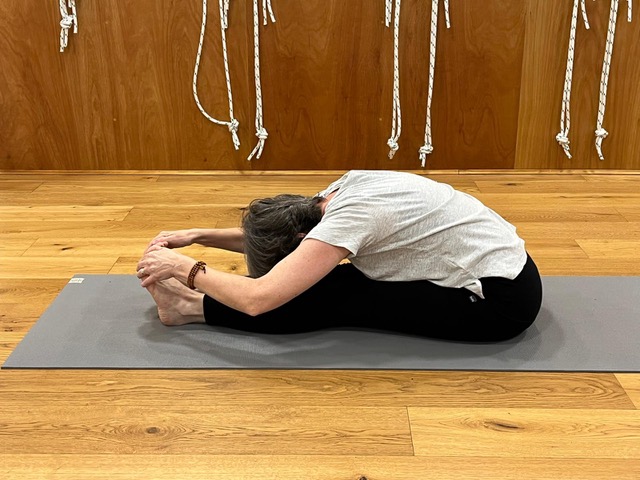
SVASANA
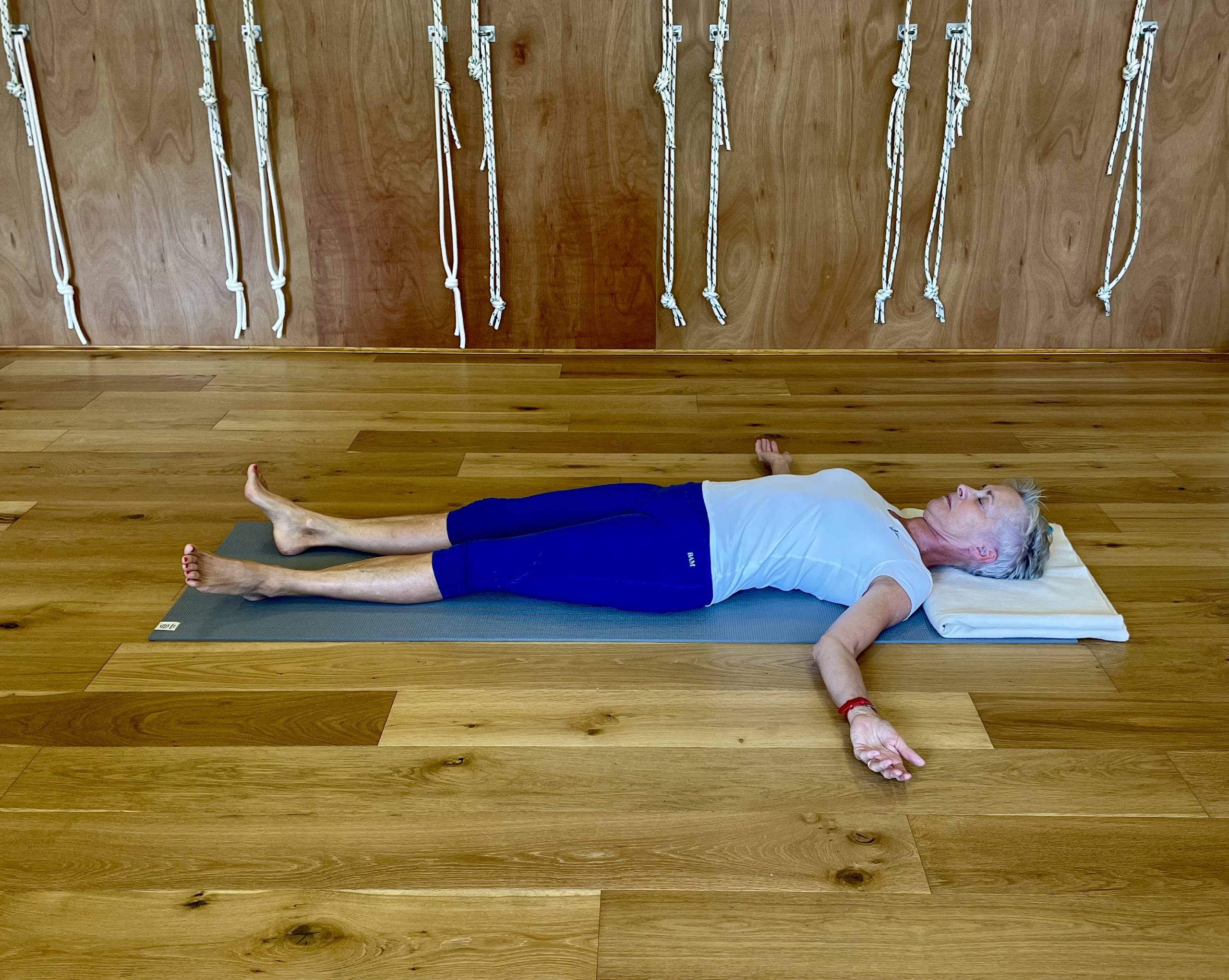
When doing these poses stay for 5 – 10 minutes maximum in each pose. Keep warm, so your mind doesn’t become distracted by the cold. Make sure that you are not touching anything, which again can be a distraction to the quietening of the brain. And take your glasses off. Put a cover over your eyes if you wish to and make sure the skin on the forehead is moving towards the nose ( so your head isn’t tipped back).
When you are in the pose, use your exhalations to allow the skin on the face to descend and the senses of perception to quieten and recede. If the brain is scattering then use “zoning” where you focus your exhalations on parts of the body finishing with the head – this gives the brain something within the body to focus on to help still the wandering mind and aid it in settling.
And if all else fails, an evening yoga class can usually support a good night’s sleep.
